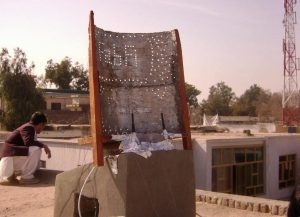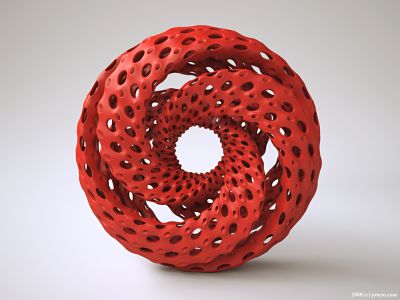Front page and thumbnail images for this article are examples of Torolf Sauermann’s 3D Art.
Recently, I heard an excellent talk about 3D printing and the future of personal fabrication from Prof. Jan Borchers from the Media Computing Group at RWTH Aachen University. Prof. Borchers is currently doing a sabbatical at the Distributed Cognition and HCI Lab at UCSD, which is where I happen to work during the academic year, giving me the awesome opportunity of hearing his ideas and thoughts on a variety of HCI-related subjects. One phenomenon he is super excited about is the Maker revolution and the future of “Users as Makers”, as he puts it. I’ll cover a little of it here and maybe some more in posts to follow, since there’s just so much good stuff.
3D Printing

So, you know how you can print out a digital JPG on your photo printer and have an actual copy? Well, 3D printers allow you to print out an actual 3D object from a digital file. This means you could be browsing the web for the perfect watch and when you find it, just download it and print it out!
Well, okay, this may not actually be possible right now, but there’s no reason why this can’t be true in the relatively near future. Currently, there are limitations on materials, color, strength and shape of the printed object, but many of these limitations are being overcome rapidly. Users are printing and sharing 3D art, artifacts, products and models online just like we shared images and music files a decade ago.
The Next Digital Revolution

Prof. Borchers sees this as the 3rd digital revolution, and here’s why. The first digital revolution was arguably the rise of the PC. Computation and processing of data – previously only accessible to large corporations – suddenly became cheap and accessible. Anybody could buy a computer and do their own word processing or basic data management.
The second digital revolution was the rise of the Internet. Communication was digitized and became fast, lossless and cheap. Bill in San Diego could digitize his favorite song, share it on Napster and Fareed in Dubai could download it. Prior to the internet revolution, Bill could tape his favorite song onto a cassette tape, stick it in an envelope and mail it to Fareed, but now all this is instantaneous. And instantaneous is magic.
“The key ingredient is digitization – when things become fast, lossless and cheap, that’s when revolution happens.” – Prof. Jan Borchers
In the coming revolution, we will be able to exchange and share things rather than media. 3D printing is not new, corporations have been using it to prototype their products for years. But when sub $500 3D printers become available, this technology will be in the hands of the regular consumer. In conjunction with PCB mills, laser cutters, and hobby electronics, what we have is essentially manufacturing technology for the masses. What will we make?
Making For the Rest of Us

Currently, there’s a lot of creative items, and small objects like gadget cases, coat hooks and the like on sites like Thingiverse.com. But the stuff that makes my heart beat faster are the things for people that are traditionally ignored by the corporations, like people with disabilities or those in lesser developed countries. Fab Labs, as conceptualized by Neil Gershenfeld, are bringing 3D printing and other technologies to communities all over the world.
Here‘s an example of a reflector antenna for long-range WiFi built for Jalalabad, Afghanistan. Prof. Borchers shared a story from India, where students used a fab lab to build a sensor that would allow dairy farmers to test the fat content of their milk. In Norway, Sami animal herders used a fab lab to build wireless trackers for their sheep.
The power shift that is happening, while somewhat under the radar right now, is set to change the manufacture and distribution of goods as we know it. No longer are corporations the ones to decide which products get made, and for whom. This is very exciting stuff!
In fact, we have two Fab Labs right here in San Diego, Fab Lab San Diego and Maker Place. So the question is, what will you create?

